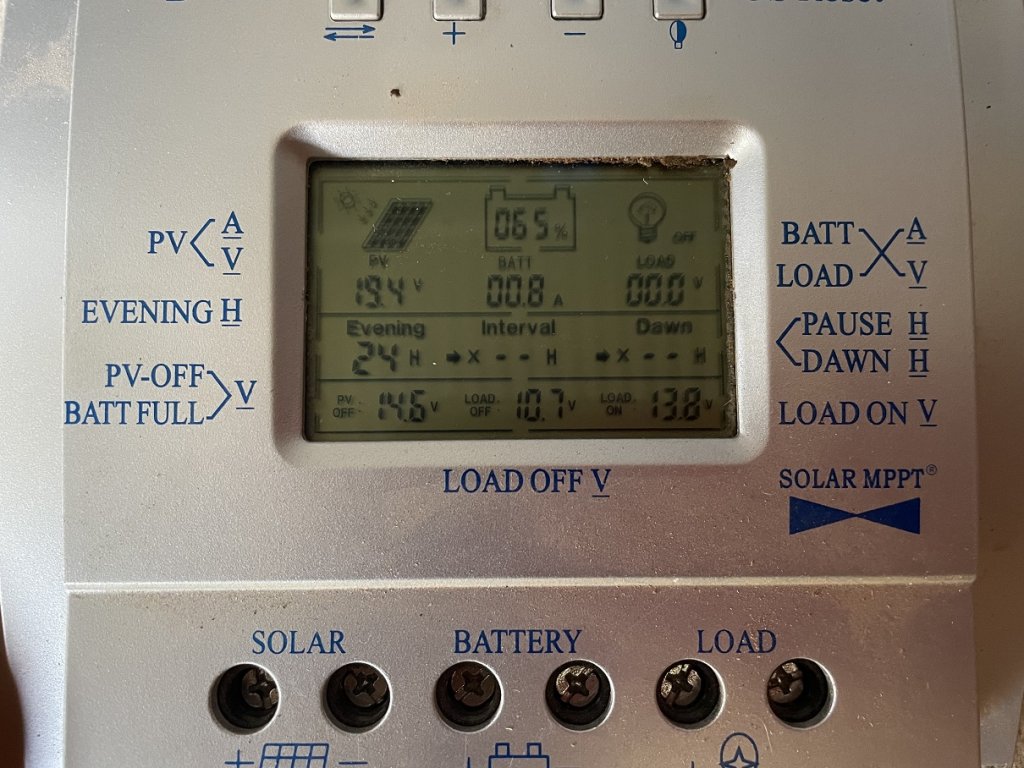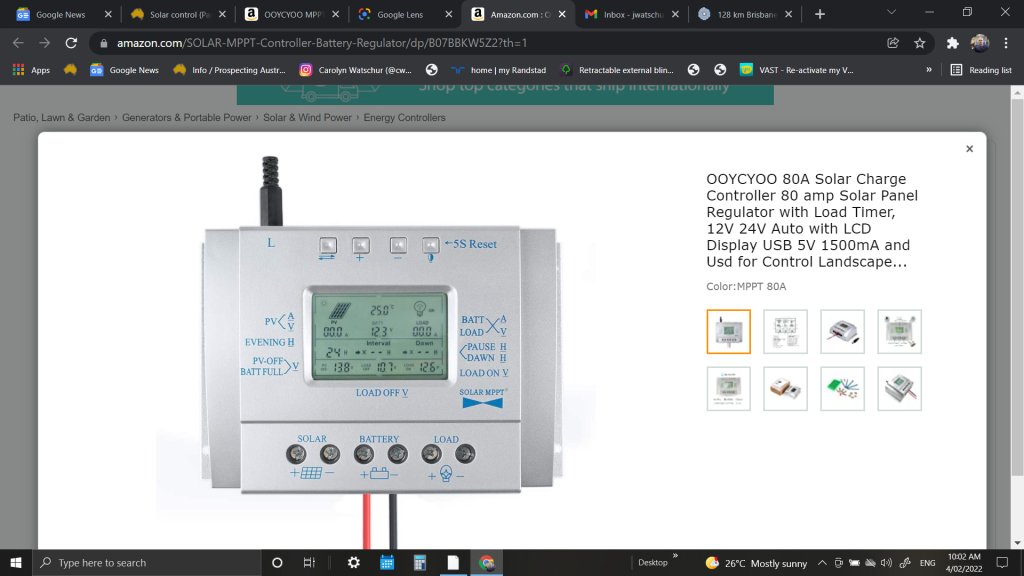Due to - First thing in the morning the cells may have voltage, but are not generating much in the way of power (Watts).
Little to no Watts with voltage = Little to no Amps

Back to Ohm's Law lol. My above example at noon in weak winter sun shows lower amps, cos lower Watts.
I didn't check the voltage today, if tomorrow is similar weather I'll check the panel input voltage and output at the controller.
-----------------------------------------------------------------------------------------------
What I did see was, the Lithium battery was full, Load plus solar in, gave a net load of 0.5 amps and the battery voltage was 13.8, so, the panels were charging or at least running most of the applied load.
However, Lithium voltage measurement can vary in different places due to its internal BMS. I've noticed my battery monitor at 13.8V (on the battery) when charging from 240VAC and the remote of that charger showing 14.2V. So, just because the charger is outputting V & A doesn't mean the battery is getting or giving the same values.
I'm still getting to grips with the Lithium affect, lol.
I've also seen the monitor showing 1 or 2 amps charge and the 240VAC charger showing 14 amps charge output. My conclusion - the charger may well be giving that output, but the Lithium internal management is only letting 1-2 amps in. This is a short lived phenomenon, when I first turn the charger on. After it recognises the battery is full, the charger stabilises to float mode and the current idles until the load increases. This can take several minutes. But I digress from the solar context.

I'm still to use the Lithium setup in earnest, but the van is stuck in the drive due to lockdowns and other reasons. I was thinking of having a holiday from SWMBO indoors and using the van as I would in the bush, disconnecting 240VAC and spending a night in the van with the heater going to see how the battery performs. Plus a few "Lemonades". :beer:







